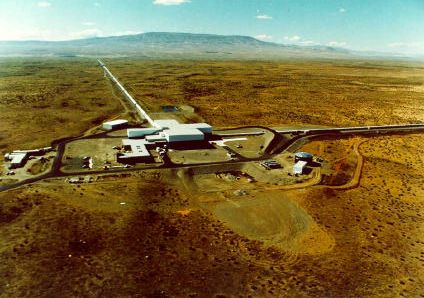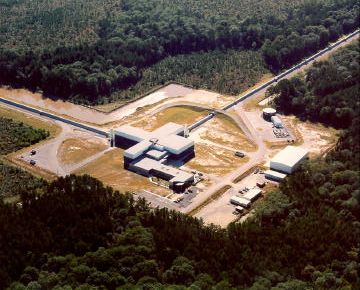![[Colliding Black Holes]](ligo_wave.jpg)
![[Colliding Black Holes]](ligo_wave.jpg)
The observation of gravitational waves from violent astrophysical sources in the universe is one of the most challenging problems for experimental physics. Potential rewards for fundamental physics and astrophysics are high. Gravitational waves let us probe highly non-linear and extremely relativistic systems that enable strong field tests of general relativity. Also, because of their weak interaction, they let us see right into the heart of strongly gravitating and active systems that are not accessible by any other observational means due to dense environments that surround them. Gravitational waves may be the only way in which we will ever learn about conditions that were present at the birth of the universe.
The next generation of ground based interferometers - such as the upgrade to the United States LIGO detector system, known as Advanced LIGO - is expected to be in operation several years before the space based Laser Interferometer Space Antenna (LISA) is launched and therefore it is anticipated that the first detections of gravitational waves will be made from the ground either by the present detectors or their upgrades.
The UK advanced LIGO project is a collaborative project involving Cardiff University, Rutherford Appleton Laboratory, Strathclyde University, the University of Birmingham and the University of Glasgow funded by PPARC. The goal is to further improve the technology of the suspensions and multiple stage pendulum adopted in GEO600 and transfer it to LIGO for the upgrade to Advanced LIGO. Following are pictures of the LIGO Hanford Observatory (LHO) and LIGO Livingston Observatory (LLO).
 |
 |